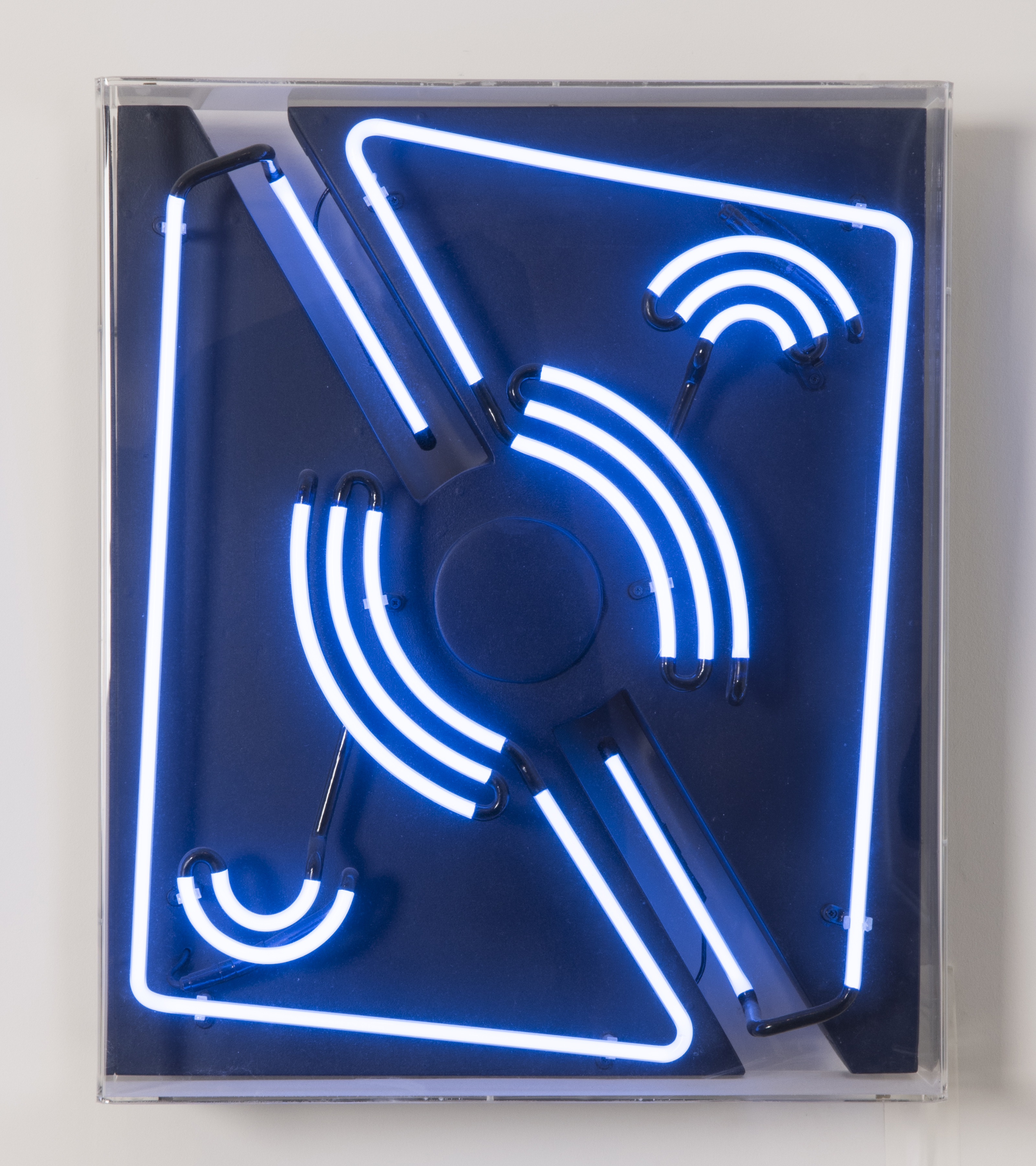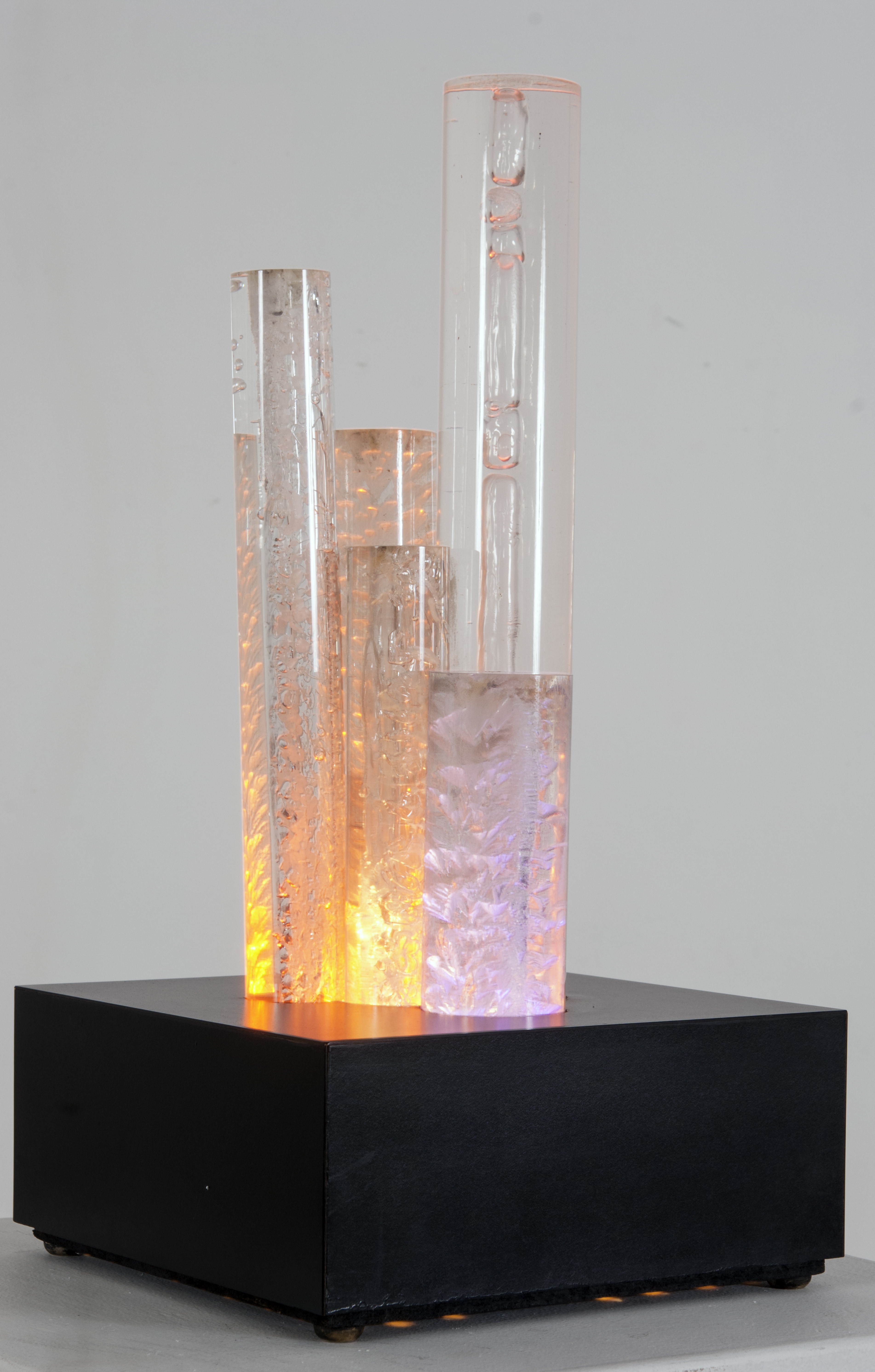Of Hungarian origin, Gyula Kosice (born Fernando Fallik) arrived in Argentina with his family in 1928. He studied drawing and modeling, and in 1944, interested in vanguard art, he founded with others the magazine Arturo, which supported non-figurative art. The same year, he made Ryi, his first abstract sculpture, with movable parts that invited the spectator to transform it. When the Arturo group dissolved, Kosice participated in the exhibitions of the Asociacin Arte Concreto-Invencin (1945) and joined the Mad movement (in 1946) together with Carmelo Arden Quin, Martin Blaszko and Rhod Rothfuss.
The members of the Mad group questioned the lack of universality of concrete art. Their approach was, rather, to invent and create objects with timeless and absolute value. In 1946, Kosice initiated his Estructuras lumnicas con gas nen, works that for the first time used neon tubes as part of his investigations into the use of new materials and technologies. At the same time he was also produced paintings with trimmed frames and a variety of metallic sculptures.
In 1947, after the publication of the Madi manifesto and the organization of some exhibitions, a dispute arose between Kosice and Arden Quin. This caused a split in the Mad movement. Arden Quin went to Paris, while Kosice and Rothfuss continued exhibiting Mad art in Buenos Aires and Montevideo. They published the magazine Arte Mad Universal, directed by Kosice. In 1947, Kosice had his first solo exhibition (Galeras Pacfico, Buenos Aires), in which he displayed works made with aluminum, Plexiglas and neon light. By this time, the trimmed frame of his paintings had disappeared and the color planes were freed of constraint. With the Mad group he participated in important group exhibitions, such as Arte Nuevo (Saln Kraft, Buenos Aires, 1947), Saln des Ralits Nouvelles (Paris, 1948) and Saln Nuevas Realidades (Galera Van Riel, Buenos Aires, 1949).
In 1948, Kosice made his first experiments integrating water and art and produced his Esculturas hidrocinticas. During the 1950s and 1960s, he continued developing his work, both with luminance current and hydrokinetics, which he combined in some cases. In 1954, he stopped publishing Arte Mad Universal, and in 1957, he moved to Paris. There, his hydrokinetic works reached greater dissemination with the launching of the manifesto La arquitectura del agua en la escultura (1959) and the exhibition Sculptures hydrauliques (Galerie Denise Ren, 1960). In 1964, he returned to Argentina.
The publishing of the manifesto La ciudad hidroespacial (1971) began a new stage of Kosice’s career. In it, he proposed a solution to worldwide overpopulation through a project of urban habitat animated by hydraulic energy located at 1,500 meters of altitude. The works that he made for this project, which in reality were scaled-down models, constituted a synthesis of art, science, technology and science a fiction. Throughout this decade, he presented this project in several exhibitions, including ones at the Espace Pierre Cardin (Paris, 1975) and the Planetarium Galileo Galilei (Buenos Aires, 1979).
Kosice created numerous works for public spaces, including Faro de la cultura (La Plata, Argentina, 1982), Victoria (Olympic Park, Seoul, Korea, 1988), and Monumento a la democracia (Buenos Aires, Argentina, 2000). Recently he has been recognized in Argentina with several awards, amongst them the Premio a la Trayectoria en Artes Plsticas (Fondo Nacional de las Artes, 1994) and the Premio Cultura Nacin (Secretara de Cultura de la Nacin, 2007).

